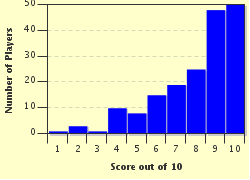Quiz Answer Key and Fun Facts
1. He was born Malcolm Little; after converting to Islam he changed his name to El-Hajj Malik El-Shabazz but was widely known as Malcolm X. His life is summed up in his only published work "The Autobiography of Malcolm X". How did he meet a sudden end to his leadership and life?
2. Niccolò di Bernardo dei Machiavelli was a true polymath from the Renaissance era who was at times an historian, politician, diplomat, philosopher,and humanist. His book on the qualities of leadership still is cited today as a guidebook, particularly for politicians. What is the English name for his work?
3. True story: At our Monday morning staff meeting, an administrative aide to the Director concluded the meeting by relaying a message from the Director that there needed to be improvement in the quality of written communications. He passed out with no comment a slim volume written by William Strunk, Jr. and E. B. White. What was this book?
4. What was the "Electric Kool Aid Acid Test"?
5. From his background of selling correspondence courses, bacon, soap, and lard, Dale Carnegie in 1936 wrote perhaps the most famous self-help book. What was the title?
6. In 1968 zoologist and ethologist Desmond Morris published a book that changed the way man looks at himself. The name was "The Naked Ape" and it was purchased by twelve million book customers. Why was it controversial?
7. It is one thing to have a theory and prove it by laboratory experimentation. It is something else to risk life and limb. Thor Heyerdahl's theory was that the Polynesian islanders came from South America, a theory not popular in academic circles. Heyerdahl then tried to make the trip that might have been made in pre-Columbian times. What was the name of the raft and the name of his book on his findings?
8. Dee Brown, a librarian by profession, wrote a history of the native American tribes and their interaction with western civilization. The book was written from a native American perspective and had perhaps some bias but it was based on in-depth research; it was hailed in 1970 as a unique and important book. What was the title of Brown's book?
9. "Unsafe at Any Speed" (1965) took on perhaps the most powerful business conglomerate in the world on the safety of its products. Next to a home, the automobile is the second largest debt a typical family incurs. We have a right to safe reliable transportation but auto manufactures have been slow to add safety measures, such as seat belts. Gear shifts were poorly placed so that accidental shifting to an unsafe gear was problematical. Nearly all accidents were attributed to driver error rather than engineering, where the reverse might be true. The author concluded that 320 million federal dollars were allocated to highway beautification in 1965, but just $500,000 was dedicated to highway safety. Who was the firebrand (and later presidential candidate) that challenged both the industry and government on auto safety?
10. Henry David Thoreau built a cabin on Walden Pond, he said to simplify his life. As a member of the transcendental movement, he wanted to test himself and demonstrate to others how this could be done. The book was titled "Walden; or, Life in the Woods" (1854). Who was the fellow transcendentalist, poet, and essayist who owned the land and Walden Pond?
Source: Author
Rehaberpro
This quiz was reviewed by FunTrivia editor
agony before going online.
Any errors found in FunTrivia content are routinely corrected through our feedback system.


